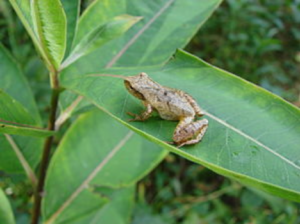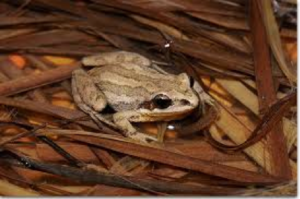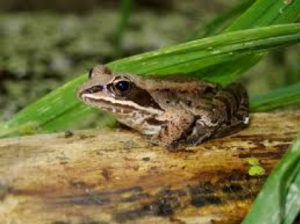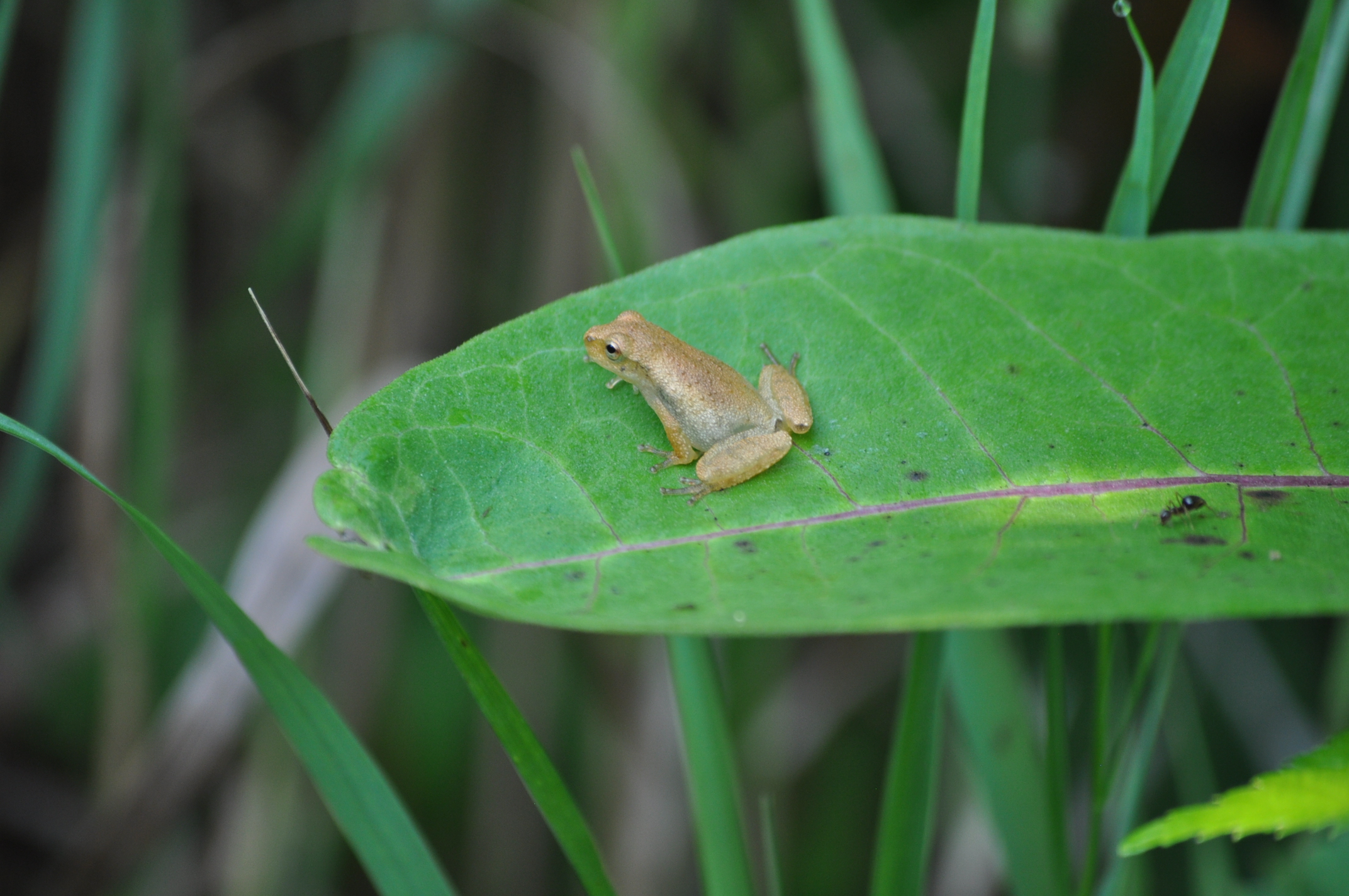The herps are here, the herps are here! Not a chant you grew up with in the spring? Me neither (although, I probably would have welcomed any sort of turtle-tracking, snake-sleuthing, frog-finding tradition!).
Herpetology is focused on the study of amphibians (frogs, toads, salamanders, and the like) and reptiles (snakes, turtles, lizards, etc.).
The Northern spring peeper, a tiny chorus frog, is the smallest and the loudest frog found in Michigan (though you can listen and judge for yourself). The familiar — and widely treasured — sound of spring peepers is for many Michiganders, tied to the sweet dawn and dusk hours of early spring days.
The Midland chorus frog (formerly known as the striped or western chorus frog) has a nostalgic, ever-present trill, which is quite a contrast to the sound of the Wood frog, which many compare to a kind of bird, such as a duck.
It’s no wonder that these three amphibian sounds also happen to be some of the most audible sounds that officially declare for us, albeit maybe unconsciously, the end of winter! It certainly makes sense, as we associate the sounds of chorus frogs, wood frogs, and spring peepers with the fresh, long-awaited new life of spring.
If you want to delve into herpetology field guides:
My two favorite books for frog and toad identification are co-authored by James “Jim” Harding. Jim is a herpetologist who is affectionately known to many through his four decades connected with the MSU Museum as ‘The Critter Guy’. (There is much more to be said about the contributions of Jim Harding, but that may be reserved for another blog post at a future date.) Anyway, treat yourself to a copy of Jim’s Michigan Frogs, Toads, and Salamanders as well as the comprehensive guide, Amphibians and Reptiles of the Great Lakes Region.
As for brushing up on your calls and/or teaching little ones the sounds of native frogs and toads, YouTube has — no surprise — an abundance of great amphibian identification videos. Check out this fantastic, Michigan-based YouTube video titled Frog Calls of Ottawa County, Michigan.

Northern spring peeper.

Midland chorus frog.

Wood frog.
What you can do to promote the health and safety of your neighborhood amphibians and reptiles:
Remember to strictly avoid the use of pesticides or insecticides, and other toxic products on your lawn, in your gardens, etc. The same practices we refer to as bird-friendly are also applicable as friendly to other native wildlife, including amphibians and reptiles.
Field herping is the act of searching out and finding these animals — amphibians and reptiles — in their natural habitat.
Why We 💚 Them:
Herps hold a significant, irreplaceable role in the ecosystem. Lucky for us, amphibians and reptiles make excellent ecological indicators of environmental pollution due to their susceptibility to chemicals during freshwater cycles.
Herps are very much impacted by habitat loss, invasive species introductions, climate change, pollution, pesticides, etc. Another notable threat to amphibians and reptiles is the deadly parasitic fungus, amphibian chytrid (read more on that development here).
Reptiles, amphibians (frogs, in particular), and insects are among the hardest hit by the current and sixth mass extinction crisis, as are insects and reptiles. The effects of climate change, habitat loss, human impact, environmental pollution, together with changes in human activity and climate, have contributed to the reduction in the amphibian population over recent decades. This article elaborates on the extinction threats amphibians (frogs specifically) face. These mosquito- and pest-consuming, indicator species play multiple key roles in the ecosystem. Responding to the loss of our amphibians is akin to the loss of our pollinators but with different ramifications: ecological health. And, as we know, that cannot be separated out from any other kind of measure of health.
Things you can do as a ‘citizen/community scientist’ to help frogs and toads:
Learn your herps. Knowledge is power, especially when it comes to conservation!
Download the Michigan Herp Atlas app and use it to record your findings! The Herp Atlas collects observation data about Michigan’s native herps, documenting their distribution and changes in their populations statewide. The contribution of amphibian and reptile sightings to this database is a contribution to conservation science!
iNaturalist to a great place to record sightings, too. iNaturalist helps you ID by connecting you on this social media platformesque setting that also contributes to much-needed field data statewide.
The DNR regularly seeks volunteers to participate in the annual Michigan Frog and Toad Survey.
FrogWatch USA is a citizen science program that trains volunteers to collect data on frog and toad populations in a scientific manner, which can then be added to a nationwide database.
~ Written by Heather Good
Michigan Audubon Executive Director
BONUS — Fun Herp Conservation Story!
Dutch photographer Matthijs Kuijpers has made it a personal mission to capture images of many colorful and bizarre amphibians before they disappear. His work is published in his new book, called “Cold Instinct” — take a look.
- Eastern American toad.
- Fowler’s toad: This species is only found on the western side of Michigan; this is a species of special concern in Michigan.
- Western chorus frog.
- Boreal chorus frog: This species is only found on Isle Royale.
- Northern leopard frog.
- Pickerel frog: This is a species is also of special concern in Michigan.
- Eastern grey tree frog.
- Cope’s grey tree frog.
- Green frog.
- Bullfrog.
- Blanchard’s cricket frog– This species is found in southern Michigan and is a threatened species in Michigan.
- Northern spring peeper.
- Wood frog.
- Mink Frog: This species is only found on the Upper Peninsula of Michigan

